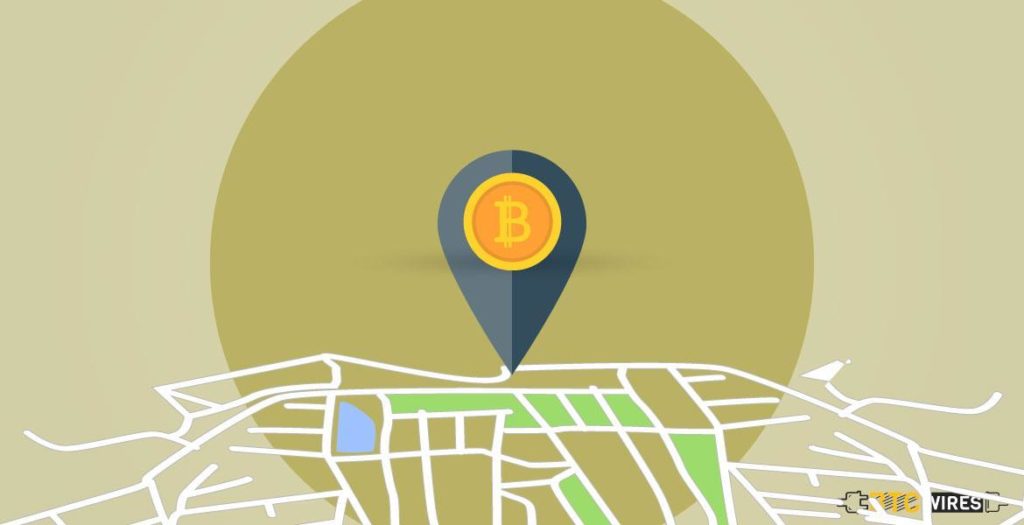Jan 14, 2019 16:30 UTC
| Updated:
Jan 17, 2019 at 12:39 UTC
Bitcoin Blockchain
When Bitcoin broke into public consciousness back in 2013, it wasn’t sexier since it was being used to buy everything from drugs to cupcakes.
Bitcoin’s wild price ride was also pretty exciting, even if the swings made its use as a regular currency seem less plausible.
Another aspect of Bitcoin, that is a bit less scintillating, is Bitcoin’s Blockchain that has generated enthusiasm as a public online ledger.
Blockchain is the technology used to verify and record transactions, and it is seen as having the potential to reshape the global financial system and other industries.
After Bitcoin’s emergence, the blockchain remains more of a tantalizing notion than a tool which now has several use cases.
You May Also Read: How to Buy Bitcoin With Cash?
The Technological Situation

The total value of Bitcoin, which neared $300 billion in late 2017, stood at $112 billion in late 2018, now stands $120 billion today.
Some of the industry thought that introduction of Bitcoin futures contracts by Cboe Global Market, CME Group Inc. and Nasdaq in late 2017 would help build the legitimacy, however trading on both exchanges was minimal.
Bitcoin’s rollercoaster ride was replicated by a raft of new digital currencies that have raised more than $21.5 billion via Initial coin Offerings (ICO).
Their explosive growth drew warnings from financial regulators across the world even before bad actors store almost $500 million worth of digital token called NEM from a Japanese cryptocurrency exchange.
The vast majority of ICOs lost significant value last year. Blockchain also had a number of setbacks, since several high-profile initiatives were dropped or put on hold, incorporating a plan by Australia’s stock exchange to start utilizing Blockchain Technology to process equity transactions.
But Wal-Mart Stores Inc. declared in September 2018 that starting 2019, it will need suppliers of fresh, leafy greens to track their items by using a digital ledger developed by International Business Machines Corp., that has spent excessively on developing blockchain tools for business.
You May Also Read: 10 Differences Between Ethereum And Ethereum Classic
The Background

Digital currencies aren’t new, as online fantasy games have been using them for a long. But the development of a secure virtual currency without a central issuer turned heads.
The person or people who developed the Bitcoin system under the pseudonym Satoshi Nakamoto solved a problem central to any currency and did it without depending on the government’s authority.
The software also solved one specific hurdle for digital currency, that was about how to stop users from spending the same unit of currency twice.
The breakthrough notion was blockchain, a publicly visible and anonymous online ledger that records every single Bitcoin Transaction.
It is maintained by a network of “miners,’ whose computers work on solving mathematical calculations validating each transaction, and preventing Bitcoin double-spending.
They earn block rewards of newly issued bitcoin. The pace of creation is limited and not more than 21 million will ever be used.
You May Also Read: 5 Sites To Buy Bitcoin With Debit Card
How Does Bitcoin’s Blockchain Technology Work?

The technology underpinning Bitcoin, Blockchain, is one of the main reasons why digital currency’s price has skyrocketed throughout the years.
Blockchain technology acts as a distributed public ledger of every single transaction made in bitcoin, that records each transaction of Bitcoin into its database and send copies to every computer in its network.
Making sure that this ledger’s true state is confirmed and updated, each node in its network cross-references as well as communicates with each other to see if all the copies are the same.
This is what publicizes and validates every single transaction. Also, it decentralizes the cryptocurrency, removing the requirement for a middleman to verify its transaction confirmation.
In case any node takes the notice of one of the ledger’s copy isn’t the same as the others, the network rejects the transaction considering it a manipulation of a transaction record.
The security protocol prevents everyone from altering the ledger for spending the digital currency more than once or send someone else’s digital funds to themselves.
You May Also Read: 5 Things You Should Know About Blockchain
A New Block
In order to update a blockchain with these verified transactions, a new block needs to be created and added to the chain of blocks.
But to do this task, the block needs to be verified and validated by the answer to a complex cryptographic puzzle.
Thus, Bitcoin rewards the individual, groups or businesses with a payout of the cryptocurrency for solving the puzzle first.
The validators, who use mining hardware and software to earn Bitcoin payouts, are called miners.
Once a miner figures out the proper solution to the cryptographic puzzle, that too is verified by each node in the network, they earn the Block reward and a new block is generated and added to the blockchain.
Each block has a unique code, that is called “hash,” on one of its sides and the hash of the previous block in the chain on its other side. That links all the blocks together in a chronological and permanent fashion.
You May Also Read: 5 Best Bitcoin Mining Hardwares
Bitcoin Miners

For Bitcoin Miners, the block reward for confirming and validating one megabyte worth of Bitcoin transaction is currently 12.5 tokens.
Validation methods are called Proof of Work, and they are one of the core reasons why ***Bitcoin and Blockchain are considered as innovative.
Incentivizing miners with payouts of Bitcoin to validate the transactions is what makes this digital currency safe, secure and trustworthy to use.
Also, mining releases bitcoins into circulation, that enhances the odds that consumers as well as merchants will be more willing to adopt, accept and trade it, while boosting the value of the cryptocurrency.
Even though, mining is economically advantageous to miners, merchants, consumers and Bitcoin itself, digging for it can generally harm the environment.
Bitcoin miners are predicted to consume more electricity than the entire country of Argentina by the end of 2019.
It is undeniable that Bitcoin miners consume a massive amount of electricity since there is a limited supply of Bitcoin.
For avoiding this issue, Bitcoin makes the cryptographic puzzles that validate each block increasingly more difficult to solve, to allow them to cap the number of blocks which miners can package and link to the blockchain each day.
Consequently, the more challenging these cryptographic puzzles get, the more electricity miners will have to use.
Here are a Few Articles for you to Read Next:


























































